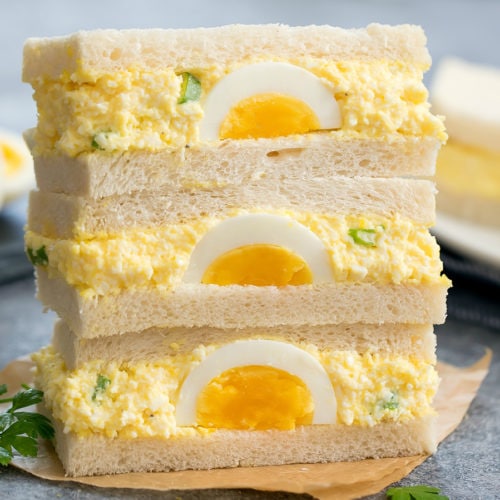There’s something undeniably enchanting about a meal prepared in the comfort of a home kitchen. The aromas wafting through the air, the warmth of the stove, the laughter and chatter of loved ones—it’s a scene that captures the essence of togetherness and the joy of sharing. As a professional food writer who has savored the delights of both home-cooked meals and the culinary masterpieces of the world’s finest restaurants, I’ve come to appreciate the unique allure that each setting offers to the dining experience.

The Unique Charm of Home Cooking
In the cozy confines of a friend’s dining room, I’ve been treated to dishes that linger in my memory far longer than any Michelin-starred meal. Take, for example, the fesenjoon and potato tahdig lovingly prepared by my Persian Jewish friend Tali, or the pu pad pong karee that graced my palate courtesy of my former professor’s wife, Nok. These dishes, crafted with care and personal touch, outshone their restaurant counterparts in flavor and sentiment.
This preference for home cooking isn’t unique to me. Conversations with fellow chefs, food writers, and culinary enthusiasts reveal a shared inclination towards meals enjoyed in the warmth of someone’s home over the sometimes impersonal experience of dining out. Even a casual poll among my Instagram followers echoed this sentiment, with many recalling their most cherished meals as those shared around a family table.
Why does home cooking hold such a special place in our hearts? It’s not for lack of quality or expertise found in restaurant kitchens. After all, restaurants boast access to premium ingredients, state-of-the-art equipment, and the skills of highly trained professionals. Yet, the emotional connection we forge with the person behind the stove, the cultural significance of the dishes, and the social context of the meal often weigh more heavily on our dining satisfaction than the technical perfection of the food itself.
The history of dining tells us that the home was the original restaurant, a place where people have gathered to share meals and maintain social bonds since time immemorial. While public eateries have existed for millennia, catering primarily to travelers and the less fortunate without kitchens, it was the act of hosting at home that solidified relationships and celebrated kinship. Restaurants as we know them—a blend of culinary indulgence and social interaction—only began to emerge in 18th-century France and later became widespread with the growth of the middle class and urbanization.
In today’s America, the ubiquity of restaurants and the convenience of takeout apps have somewhat overshadowed the tradition of home hosting. Yet, the benefits of communal dining, from emotional well-being to academic performance, are well-documented. Despite this, many view the prospect of hosting as a source of stress rather than a joyous occasion.
The transactional nature of restaurant dining, with its time constraints and limited interaction with the chefs, stands in stark contrast to the intimate exchange that occurs when you’re a guest in someone’s home. There, you’re not just a customer; you’re part of a shared experience, a participant in a cultural exchange that transcends mere consumption of food.
While restaurants certainly have their place in our lives, offering convenience and culinary innovation, they cannot fully capture the magic that happens when food is prepared and shared in the home. It’s in these personal spaces that we find not only sustenance but also connection, tradition, and the true essence of hospitality.
In the next section, we’ll delve into the practical reasons why certain restaurant-quality dishes are challenging to replicate at home. We’ll explore the limitations of home kitchens, the specialized equipment found in professional settings, and the culinary techniques that make restaurant fare so distinctive. Stay tuned as we uncover the secrets behind the restaurant magic and why, despite our best efforts, some things just can’t be cooked as good at home.
Reasons Why Restaurant Dishes Are Difficult to Replicate at Home
Diving into the practicalities, let’s consider the limitations of home kitchens in replicating restaurant dishes. It’s not just about the skill of the cook or the quality of the ingredients—though these are undoubtedly important—but also about the equipment that most of us simply don’t have at home. Take, for instance, the brick ovens used for pizza in many high-end pizzerias. These ovens reach soaring temperatures that a conventional home oven can’t match, creating that perfectly charred crust that’s become the hallmark of artisanal pizza. The intense heat ensures a quick cook time, allowing the dough to puff up into that delightful airy texture while the toppings get just the right amount of caramelization. Trying to replicate this at home without a brick oven often results in a less than satisfactory imitation, with a crust that’s either too doughy or overcooked and toppings that lack that distinctive roasted flavor.
Similarly, the pressure cooker deep fryer is another piece of equipment that’s uncommon in home kitchens but a staple in many restaurants, especially those known for their fried chicken. This device combines high pressure with high heat to cook the chicken faster than a traditional fryer, resulting in a juicier interior and a crisper exterior. It’s a game-changer for fried chicken aficionados. At home, even with a dutch oven and a thermometer, achieving the same level of moisture retention and perfect crispness is a tall order. The pressure cooker deep fryer is a prime example of how specialized equipment can elevate a dish from good to great.
It’s not just about the big-ticket items like ovens and fryers. Consider the humble grill. Sure, many of us have grills at home, but they’re often not the same caliber as those used in restaurants. Professional grills are designed to maintain consistent high temperatures and can include features like adjustable grates and even heat distribution that ensure every inch of your steak is cooked to perfection. At home, you might find yourself battling hot spots and flare-ups, leading to unevenly cooked meat.

There’s the sous vide machine, a darling of modernist cuisine that’s slowly making its way into home kitchens but is still far from commonplace. This device allows chefs to cook food to the exact level of doneness desired, with unparalleled consistency. The precision it offers is hard to match with traditional cooking methods, and while adventurous home cooks might invest in a sous vide setup, it’s not something you’ll find in every kitchen drawer.
Don’t forget about the array of smaller tools and gadgets that professional chefs have at their disposal. From mandolines for perfectly thin slices to microplanes for the finest zests, these tools make a difference in the texture and presentation of dishes. Sure, you can slice and zest without them, but the finesse that these tools bring to the table is hard to replicate with a standard kitchen knife or grater.
Beyond equipment, there’s also the matter of technique. Chefs spend years honing their skills, learning the intricacies of different cooking methods, and mastering the art of timing. The precise flip of a sauté pan, the delicate touch needed for emulsifying a sauce, or the exact moment to remove a piece of fish from the grill—these are skills developed over time and with practice. While passionate home cooks can certainly learn and improve, the level of expertise found in a professional kitchen is tough to match on a home stove.
The environment of a restaurant kitchen also plays a role in the quality of the food. The high-energy atmosphere, the teamwork, and the pressure to perform night after night create a unique dynamic that’s difficult to replicate at home. There’s a reason why dishes prepared in a restaurant often taste different than when you make the same recipe at home. It’s not just the ingredients or the equipment; it’s the entire ecosystem of the professional kitchen that contributes to the final product.
While we can certainly strive to create restaurant-quality dishes in our own kitchens, there are inherent limitations that make it an uphill battle. The specialized equipment, the professional-grade tools, the years of technique, and the environment of a bustling kitchen all play a part in the magic that happens in a restaurant. It’s this combination of factors that often makes it unreasonable to expect home-cooked meals to rival those of a restaurant. But that doesn’t mean we should stop trying. After all, part of the joy of cooking at home is the challenge of pushing our culinary boundaries and the satisfaction of sharing our creations with friends and family. So, while we may not have a brick oven or a pressure cooker deep fryer, we have the heart and soul of home cooking, which, in its own way, is just as special.
Related posts:
What Home Cooking Does That Restaurants Can’t
Why The Chef Can’t Make The Dish You Just Invented




